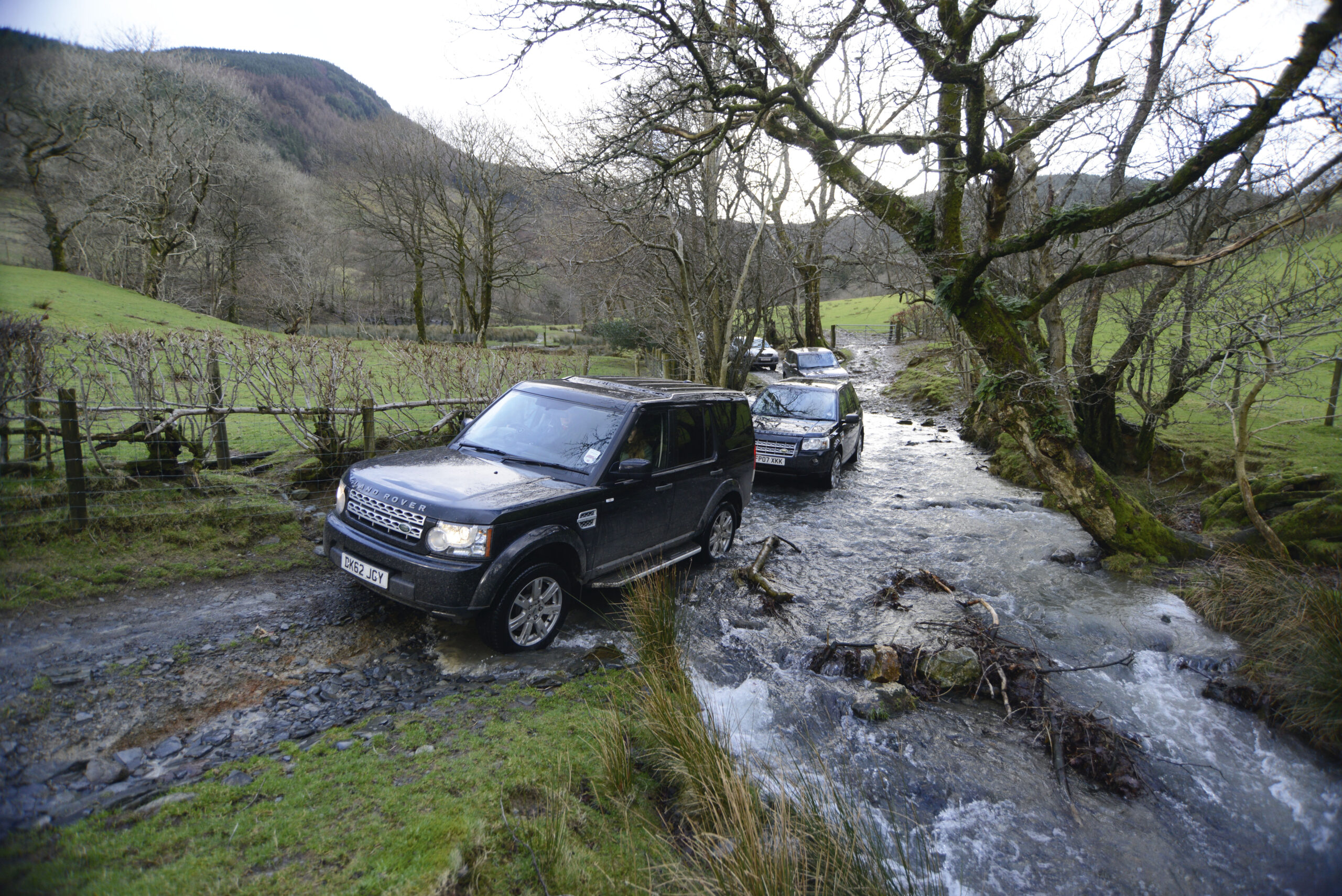Off-road driving: Tips for shooting parties
Off-road driving is difficult and dangerous if the driver is not prepared for the potential dangers before them, especially in snow, mud, water and ice.

For a large number of those who go shooting, whether to beat, pick-up or actually point a gun, one of the great joys of our sport is that we get to use our 4x4s for off-road driving, the purpose for which they were designed. For 300 and something days a year, you really might just as well have bought a Toyota Corolla – that Land Rover of yours will just be aerodynamically inferior, have a higher centre of gravity and drink considerably more fuel.
But on shoot day it comes into its own, allowing you to show off your knowledge of all those buttons and levers, and justify its purchase to both yourself and the domestic CFO. Even better, there is normally an element of competition between the owners of 4x4s, and even the meekest adopt a look of steely determination when faced with a wet, muddy hill and some Herbert in an X5.
As someone who has done more than his fair share of getting stuck, I headed off to the recently-opened Land Rover Experience Centre at Broughton Hall, North Yorkshire, to gather a few words of wisdom on off-road driving from Kevin Mann, the lead instructor.
Off-road driving on wet and slippery grass
This is one of the most common challenges of off-road driving, and one of the most difficult. Which of us hasn’t set off up a perfectly innocuous grassy slope to find a surface more akin to sheet ice coated in Teflon? Kevin has some tips: “Firstly, plot a course up as straight as possible, and perpendicular with the fall line, so that if you find yourself sliding back down, you do so in a straight line. If your car has them, lock the diffs or engage the right setting in the terrain-response system. Then try it first at a sedate pace.
In all off-road driving, we always say: as slow as possible, as fast as is necessary. If that doesn’t work, try a little more momentum and a higher gear but try to keep the wheels straight. If you have the steering hard over, you’re just making it much harder for the car. And, unless there’s a very clear track or a crop, spread out. It’s harder to get up when someone else has cut the ground up and it’s actually kinder on the ground to spread the wear.”
Off-road driving through narrow gateways
As these are choke points, they often tend to end up as quagmires long before anywhere else, and their gateposts are the best friends of your local crash repair shop. Firstly, Kevin advises making sure your car will actually fit through. “If necessary, get out and walk it, measuring as you go. Then, have a look at the terrain. If anything is going to cause the car to lean, you can end up resting its sensitive superstructure on the unforgiving gateposts. Line up straight in advance if you can. Then, as you head through, make sure you don’t do anything sudden. Steady throttle and, if you have to, very steady braking so you don’t slide.
“If you have a long-wheelbase car, like a 110 Defender, watch out for the rear wheels tracking a tighter course than the front ones, and if you have a pick-up with a long rear deck, watch out for it swinging in the opposite direction and clattering the outside post.”
Off-road driving on steep downhill banks
“Stop at the top and have a look. Walk it if necessary. If in doubt, bottle out. Is there another way? If you are going to try it, make sure that your route is parallel with the fall line if possible. Have you got room to recover at the bottom if necessary? Then, engage the lowest gear possible, lock the diffs or engage hill descent control. And drive, as slowly as you can, straight down. If you start to slide, don’t brake. If anything, and I know it sounds counter-intuitive, ease your speed very slightly up so that the car can start gripping again.”
Off-road driving through deep water
The first thing here is kit. It is a little-known fact that even the kind of Land Rover that would appeal to the most Lara Croft of Shooting Gazette readers will be of no use if the electronics aren’t water-proofed. Kevin is strict on this: “Don’t try it if you’re not certain. If it’s a known location, check for familiar rocks or vegetation that are normally clear of the water. If not, walk the river first and don’t just check the depth, also check whether you’re off-road driving over soft silt or dirty great big rocks. Look for your exit route. Take it very steady and, if it looks like it’s going to get tricky, reverse back out but be careful as modern exhausts don’t like suddenly ingesting cold water. Don’t build up a bow wave and keep your speed down so as not to cut the bank away.”
Off-road driving through fast-flowing water
If the water can pass under the car, you’re fine. If it’s above the bottom of the doors and it’s flowing at more than a walking pace, the advice is not to try it, unless you have old Land Rover door seals, which were designed to let the water flow in one side and straight out the other. “If you do start to float downstream, look for an exit point but it’s better not to get yourself into that position, especially as hitting a big rock with your sump does not tend to have a positive effect on local salmon.”
Off-road driving through deep mud
This is where good tyres come into their own as the lugs on them act like cogs of a gear and haul the car along, although they can also be detrimental to one’s chances of being invited back as they cause more damage.
“Go in slowly to test it,” says Kevin. “If you grind to a halt, reverse back and try again a bit faster. But remember, the quicker you go, the more stuck you can get. If you feelthe traction control kicking in, maintain just enough throttle to keep the system just in operation, which will give you the optimum chance of making progress.”
Climbing in convoy
“The crucial thing here is to leave enough space. Wait far enough back, or to the side, so that the car in front has room if it has to reverse back. Remember that the hill gets more difficult to climb up as it gets more cut up, so it can be a good idea to put the least capable car at the front.” So that’d be the X5…
Off-road driving through snow
Winter tyres really do make a huge difference in snow. After all, four-wheel drive has absolutely no impact when you’re sliding down a steep hill towards parked cars. As Kevin says: “You can’t beat physics. Once again, take it slowly if you’re going down a snowy hill and, if you start to slide, accelerate gently to bring the car back under control. If you’re sliding backwards, gently steer the car back to the fall line. Don’t brake. Or if you have to, do it as gently as possible.”
Other than that, Kevin’s advice is always to be as gentle as possible with your throttle, brake and steering inputs and to look out for obstacles that snow might be hiding. Finally, he says: “If you have terrain response, only put it into ‘grass gravel snow’ if it’s a light covering. If you’re in deep, wet or drifted snow, select ‘mud ruts’ as it’s better for sticky conditions.”
Off-road driving through the slippery stuff
Kevin says: “Avoid ice.” I’m a little more realistic and would advise to always pay attention to what the road surface looks and sounds like. If it goes quiet, very gently lift off everything and wait to cross to grippier tarmac. If there isn’t room, please make sure that your tray table is stowed and your seat is in an upright position, as you are proceeding directly to the location of your accident.
Ben was the guest of Land Rover Experience North Yorkshire at its new Broughton Hall, Skipton, facility. Tel. 01756 611060, visit yorkshire.landroverexperience.co.uk or email: [email protected]









